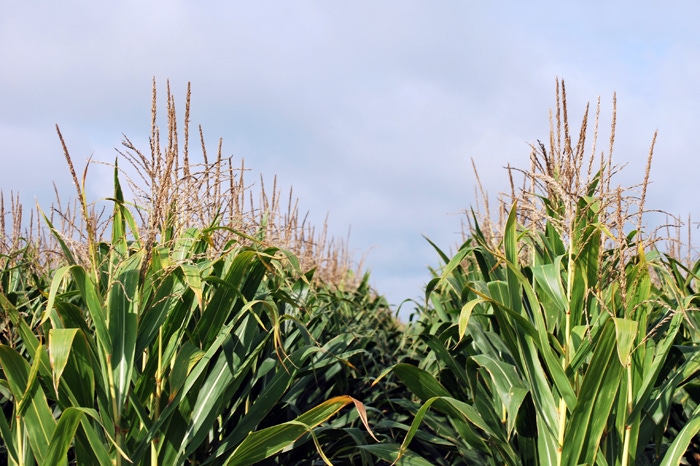April 15, 2015

What’s certain about modern corn hybrids is that they’re going to be more resistant to water stress and will be green for a longer period of time. So what does this mean for nitrogen timing and rates?
“This starts with the presumption that hybrids are different today than they were 20 or 30 years ago, says Tony Vyn, Purdue University agronomy professor. “It’s a challenge in agronomic research to always have research that is relevant to today’s genetics, especially when they change so quickly.”
In this first of a two-part series, Tony Vyn, University of Purdue agronomy professor, analyzes the nutrient requirements of modern corn hybrids and how they have changed in recent years.
One of the things fundamentally different about today’s hybrids in general is that they are higher yielding, says Vyn, but they are also different in their nitrogen uptake timing and their efficiency of utilization of nitrogen.
“We looked at all of the known literature around the world and divided the information to before 1990 and then from 1991 through 2011. Nitrogen rates during these time periods covered the whole range, from 0 to 500 pounds with an average of about 125 pounds per acre. The average density is 6,000 plants more during the current era compared to 1990 and before, and the average yield is 30 bushels per acre higher.

RESEARCH CONDUCTED BY University of Purdue Agronomy Professor Tony Vyn has focused on the changing nutrient requirements of modern-day corn hybrids.
“The main differences are that we’re producing more grain per unit of nitrogen that is being taken up into the plant. So we’re now producing an average of 56 pounds of grain for every pound of nitrogen taken up above ground,” says Vyn.
While growers are increasing corn yields and being more efficient in producing grain per unit of nitrogen, the grain nitrogen concentration or protein content has decreased along with the stover nitrogen, he adds.
“But we can’t pretend everything is so cut and dry. There can be a lot of variation in how much yield is produced per unit of nitrogen taken up above ground. Looking at the modern period of 1991-2011, we see quite a wide range in the actual nitrogen uptake in a pound-per-acre basis. “You could have a whole-plant uptake of a little less than 1 pound of nitrogen per bushel, or you could be requiring as much as 1.6 pounds of nitrogen per bushel. A large part of that is because there are differences in hybrids even within a seed company in a particular year, and there’s a huge impact of management in terms of the responsiveness of corn to how much grain you produce for every unit of nitrogen you take out. Some of that is plant population along with other factors.”
There are options for growers to consider, says Vyn, when applying nitrogen in a manner that will be more responsive to today’s corn hybrids.
“Four options we see in Indiana include a fall pre-application, mostly with anhydrous ammonium, a preplant, a spring at-plant and a sidedress application.”
Comparing old versus new, side by side
The previous research on older and modern-day corn hybrids did not compare them side-by-side grown in the same environment, says Vyn.
“A couple of years ago, we began planting hybrids from different decades side-by-side going from 1960 to 2005, and we planted them at 22,000, 32,000 and 42,000 plants per acre at two nitrogen rates – 50 and 200 pounds for a corn/soybean program. We’ve done a lot of processing of plants to determine when nitrogen is taken up and how much taken up.”
Eight hybrids were tested, but for comparison purposes, Vyn focuses on the four extremes in the study.
“We’re looking at the effects of two modern hybrids, from 2005, and two older ones, from 1975, on grain yields, total nitrogen uptake and post-flowering nitrogen uptake when the total nitrogen rate is 200 pounds per acre.”
One of the modern hybrids, he says, is a triple-stack, and the other is Roundup Ready only. Both made about 225 bushels per acre, compared to the older hybrid at 189 bushels per acre. The older hybrid yielded about 35 bushels less and is also took up about 40 fewer pounds of nitrogen. A big part of that reduction, he adds, is that it is taking up a smaller fraction of its total nitrogen after silking.
“The older hybrids are taking up less nitrogen, but the biggest difference is that they do not continue to take up nitrogen for as long a period in their growth cycle. So that’s one aspect that is very important in considering how much nitrogen you need to satisfy yield levels of current hybrids, and when that nitrogen is being taken up or the timing.”
Intensive research examined low, medium and high nitrogen amounts, with medium being 100 pounds and high being 200 in a corn/soybean program, says Vyn.
“We had three plant populations again because they are increasing each year. In Indiana, that’s about 330 plants per acre per year because modern hybrids are more stress tolerant. We tried to determine when nitrogen was taken up and how responsive it was to that intersection of nitrogen and plant population.”
Highest yields occurred at 32,000 plants and 200 pounds of nitrogen. About 170 bushels were produced at the 100-pound nitrogen rate with 22,000 plants per acre. As growers move to higher densities, there is a higher risk of nitrogen efficiency stress, says Vyn.
“Higher plant densities are fine in and of themselves in responsive hybrids with good water availability, but there is an inherently bigger risk in having a yield reduction at the high density.”
Nitrogen uptake was analyzed at the V5, V10, V15, R1, R3 and R6 stages, he says.
“There has been more concern lately about nitrogen and its consequences for the availability of other nutrients that are essential. By silking time, only 45 percent of the phosphorus is in the plant. During the grain-fill period, 55 percent of the phosphorus is going into the plant, so the majority of total phosphorus is going in after flowering. The majority of zinc is going in after flowering. At least 40 percent of sulfur is going in after flowering and 30 percent of magnesium. Potassium is essentially in the plant at flowering time.”
This is a wake-up call that growers not only need to be worried about nitrogen but also about the other nutrients, says Vyn.
“It’s also possible that when you go to higher levels, you might lose some of the efficiency. We’ve had experiments where the nitrogen efficiency didn’t increase as we continued to move to higher yield levels. In fact, we’ve seen some situations where in order to get to 200 bushels, we needed 1 pound of nitrogen per bushel of grain. But to get to yield levels of 275 bushels-plus, we needed about 1.2 pounds of nitrogen in the plant.”
About the Author(s)
You May Also Like




